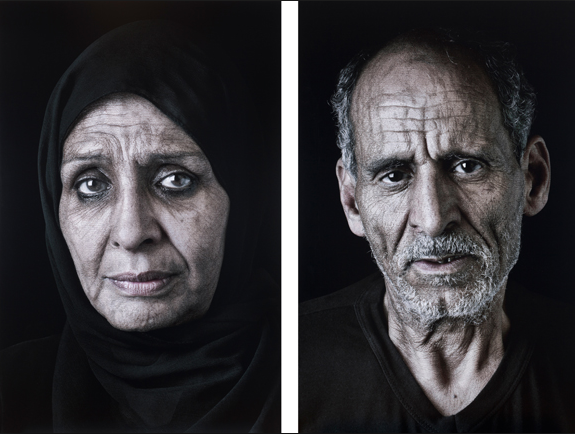Davison Art Center Awarded 2 Photos by Iranian Artist Neshat


The Davison Art Center has been awarded two photographs by the Iranian artist Shirin Neshat, as part of a gift from the Robert Rauschenberg Foundation to 33 leading colleges and universities around the world. The prints, titled “Ghada” and “Sayed,” are part of Neshat’s Our House is on Fire series, an exploration of Egypt after the Arab Spring, which was supported by the Foundation.
“Shirin Neshat is one of the most important photographers of our time, and these deeply moving portraits evoke our common humanity. Looking closely at the photographs, you can see a veil of calligraphy—the text in Persian for the poem A Cry, by Persian poet Mehdi Akhaven Sales,” said Clare Rogan, curator of the Davison Art Center. “These fascinating images prompt us to consider humility, complexity, and the interlocking role of the arts, letters, contemporary life, and politics—all topics perfect for teaching here at Wesleyan.”
In Our House Is on Fire, Neshat investigates the universal experiences of pain and mourning on both national and personal levels. Traveling to Egypt, the artist invited various people to sit before her camera and to share their stories of loss, culminating in her new portrait series. Photographing her subjects up-close and with notable directness, Neshat creates a poignant connection between subject and viewer. She then overlays the images with a nearly indecipherable veil of text, inscribing calligraphy across the folds of each face, thereby mirroring the way in which a national calamity has become embedded in the personal history of each individual.
The Foundation awarded the prints to the 33 institutions through on a competitive process, in which each institution submitted a proposal for how they would incorporate the prints into their curriculum, daily life, and campus-wide events. The institutions all committed to using the portraits to foster challenging conversations on issues ranging from gender roles and inequality to the effects of war and cross-cultural understanding.
“Due to the recent events in Europe and Middle East, we believe that it is more important than ever to engage in cross-cultural discussions,” said Christy MacLear, executive director of the Robert Rauschenberg Foundation. “Neshat’s project embodies Rauschenberg’s own belief that art could change the dialogue for challenging international issues. Our goal with this donation is to encourage dialogue about the portraits’ artistic, cultural, and political value while also creating an opportunity for academic departments to collaborate with school museums and galleries.”
At Wesleyan, the photos will be used for teaching classes at the Davison Art Center. For other members of the Wesleyan community or the public wishing to view these photographs or other works at the DAC, call 860-685-2500 or e-mail crogan@wesleyan.edu.

